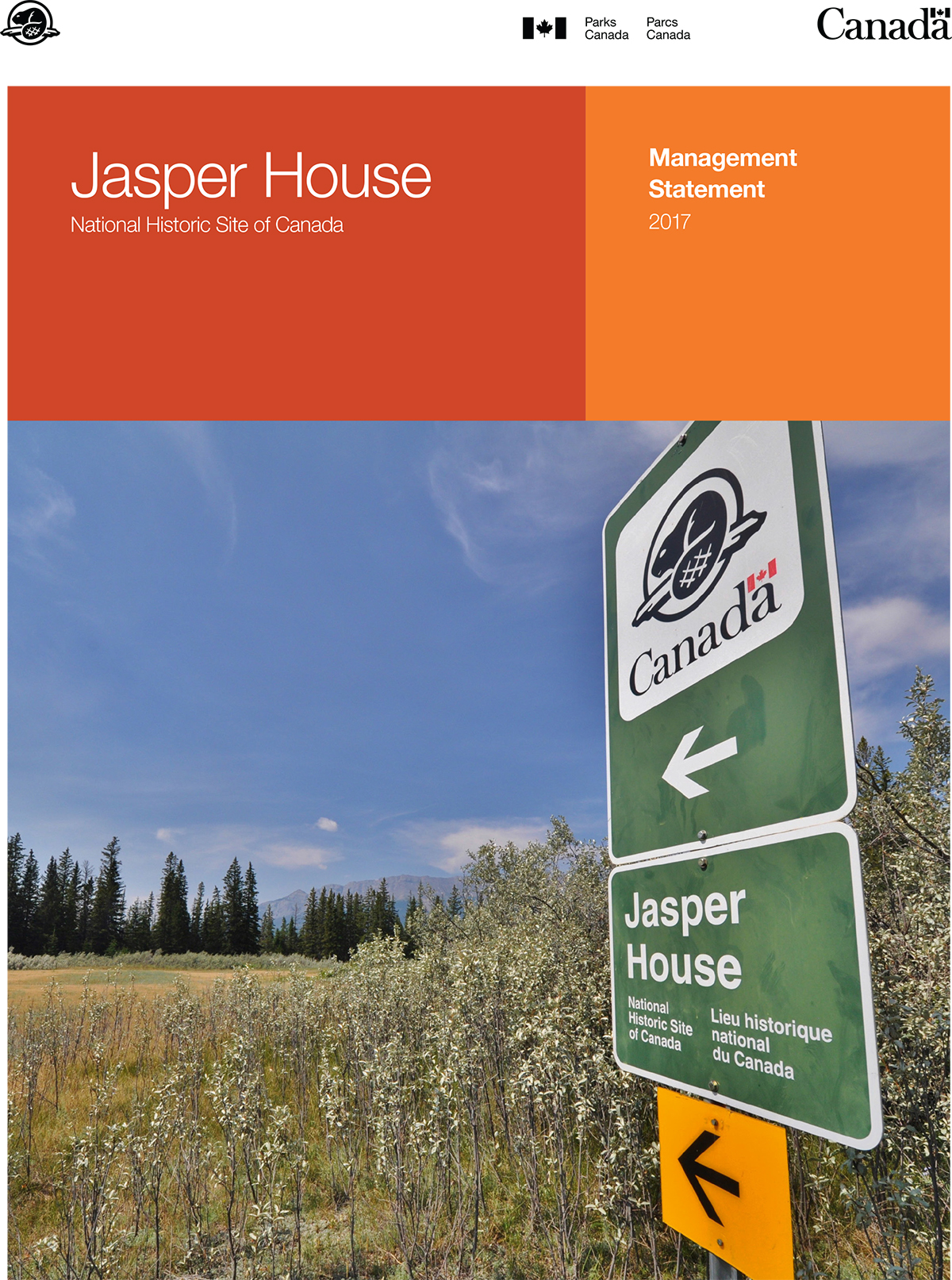Jasper House National Historic Site of Canada Management Statement, 2017
Jasper House National Historic Site
The Parks Canada Agency manages one of the finest and most extensive systems of protected natural and historic areas in the world. The Agency’s mandate is to protect and present these places for the benefit and enjoyment of current and future generations. This management statement outlines Parks Canada’s management approach and objectives for Jasper House National Historic Site.
Table of contents

© Her Majesty the Queen in Right of Canada, represented by the Chief Executive Officer of Parks Canada, 2017
Cette publication est aussi disponible en français.
For more information about the management statement or about Jasper House National Historic Site of Canada:
PO Box 10
Jasper, AB T0E 1E0
Canada
Approval
Approved on September 18, 2017 by:
Alan Fehr
Field Unit Superintendent
Jasper National Park
Parks Canada
Introduction
The Parks Canada Agency manages one of the finest and most extensive systems of protected natural and historic areas in the world. The Agency’s mandate is to protect and present these places for the benefit and enjoyment of current and future generations. This management statement outlines Parks Canada’s management approach and objectives for Jasper House National Historic Site.
Jasper House National Historic Site of Canada is located at a once-strategic point on routes through both Yellowhead Pass and the Athabasca Pass in the Canadian Rockies, approximately 35 km east of Jasper, Alberta. It was also strategically located for Indigenous people traveling through Snake Indian Pass into the upper Smoky River drainage, the Fraser River drainage and the interior of British Columbia.
First established by the North West Company in 1813, Jasper House was relocated in 1830 to the west bank of the upper Athabasca River near the north end of Jasper Lake, and became the centre of a modest and diverse community and an important staging post for travelers, serving as a warehouse for those crossing the two passes.
The post is associated with the Moberly family, as Henry John Moberly operated the post on a seasonal basis from 1858-1861, and whose descendants were among the first settlers in what was to become Jasper National Park. Similarly, Lewis Swift settled at Jasper House in 1891/1892 and modified the surviving structure, using it as a base from which to survey the valley for a suitable homestead location.
Jasper House served as a meeting place for all persons journeying through the Athabasca and Yellowhead passes throughout much of the 19th century including Indigenous peoples, explorers, missionaries, surveyors and homesteaders.
The remaining structures at Jasper House were destroyed in 1909. Today, the hectare and a half clearing where Jasper House stood is an archaeological site and cemetery with few remaining vestiges of the past but a strong sense of history. A road-side stop features the commemorative plaque, and a short walking trail with interpretive signs leads to a lookout with views across the Athabasca River to the clearing. The historic site fosters an appreciation of the landscape and conditions Indigenous peoples, fur traders and explorers endured when they travelled through here over 150 years ago.
Management approach
Parks Canada continues to manage the semi-remote site as a Zone I - Special Preservation area under the Jasper National Park Management Plan (2010). Jasper House has a strong sense of place and time, having maintained the relationship between the cultural landscape and the natural environment. Cultural resources of national significance include the remains of building footprints and chimney mounds, and archaeological resources such as middens, depressions, the cemetery and historic trails.
With pedestrian-only access from the Celestine Lake Road, the site receives few visitors. However, the plaque at the road-side stop, the interpretative walking trail, and information online and through partners such as the Jasper Yellowhead Museum and Archives highlight the stories of early human use of the Athabasca Valley, including traditional use by Indigenous peoples, the fur trade route and Jasper House.
For a map, please refer to: http://www.pc.gc.ca/en/lhn-nhs/ab/jasperhouse/visit.
Management objectives
- Parks Canada works collaboratively with Indigenous peoples in the planning, management and operations of our heritage places and is committed to building mutually beneficial relationships with Indigenous communities, based on trust, respect and understanding. In managing Jasper House National Historic Site, Parks Canada works with interested Indigenous communities associated with Jasper National Park to incorporate traditional knowledge and values into the protection, interpretation and visitor experience of the area.
- Parks Canada protects the cultural and archaeological resources of Jasper House to ensure the commemorative integrity of the national historic site within Jasper National Park. Working with others, Parks Canada preserves the elements that define the character of the historic site and give meaning to the overall pattern and understanding of the cultural landscape, including the cemetery and the surrounding natural environment.
- Parks Canada works cooperatively with partners and stakeholders to enhance the understanding and awareness of the site, and to manage appropriate access and visitor use in keeping with its designation as a National Historic Site and Special Preservation area.
- Date modified :